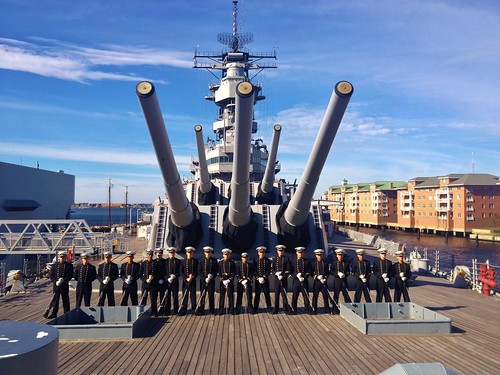
The United States will shift the bulk of its naval fleet to the Pacific by 2020 as part of a new strategic focus on Asia, Pentagon chief Leon Panetta told a summit in Singapore on Saturday.
The decision to gradually deploy more ships to the Pacific Ocean, along with expanding a network of military partnerships, was part of a "steady, deliberate" effort to bolster the US role in an area deemed vital to America's future, he said.
The move reflects US concern over China's rising economic and military might but Panetta insisted the strategy was not a challenge to Beijing.
Panetta said "by 2020, the Navy will re-posture its forces from today's roughly 50/50 percent split between the Pacific and the Atlantic to about a 60/40 split between those oceans.
"That will include six aircraft carriers in this region, a majority of our cruisers, destroyers, littoral combat ships, and submarines."
The US Navy currently has a fleet of 285 ships, with about half of those vessels deployed or assigned to the Pacific.
Although the total size of the fleet may decline in coming years depending on budget pressures, Pentagon officials said the number of naval ships in the Pacific would rise.
The United States also planned to expand military exercises in the Pacific and to conduct more port visits over a wider area extending to the Indian Ocean.
Panetta spoke to mainly Asian defence officials and officers from 27 countries at the Shangri-La Dialogue, an annual summit organised by the London-based International Institute for Strategic Studies.
Unlike previous summits, China chose not to send a high-level delegation to the event, prompting speculation as to what lay behind the move.
But China's official news agency warned Saturday it was no time to "make waves" in the disputed South China Sea and suggested Washington may have "emboldened" some states to make claims in the area.
"As regards the South China Sea tensions, it is some other claimants, whether emboldened by the United States' new posture or not, that sparked the fire and have been stoking the flames," said Xinhua.
Since President Barack Obama unveiled plans in January to shift towards Asia, the Pentagon has offered up few details about how it intends to achieve its goal.
Saturday's announcement provided the clearest evidence yet of a shift to Asia, and the speech appeared designed to reassure allies that Washington will back its much-publicised "pivot" to Asia with tangible action.
Singapore's Defence Minister Ng Eng Hen praised the plan to send more US warships to the Pacific, describing it as a "sizeable commitment."
Singapore later said it had agreed in principle to allow four new US naval vessels to deploy to its ports, though officials from both governments stressed the littoral combat ships would not be permanently based there.
With America's military budget under mounting pressure, some analysts and lawmakers questioned if the US Navy had the resources to carry out Obama's vision.
In his speech, Panetta said budget woes in Washington would not affect the plan to tilt towards Asia.
As part of its Asia strategy, the United States has already started to deploy up to 2,500 US Marines in northern Australia, a move that has rankled China.
Military spending is steadily rising in Asia-Pacific states but Australian Defence Minister Stephen Smith said the US deployment of Marines to his country would not feed tensions.
"We don't in any way see this initiative causing either instability or in any way an arms race," Smith said at the conference
Amid a growing US-China rivalry, American officials privately acknowledge the push for a larger military footprint is meant to reinforce US diplomacy when confronting Beijing's assertive stance in the South China Sea.
Panetta, however, insisted that Washington wanted dialogue with Beijing and not conflict.
"Some view the increased emphasis by the United States on the Asia-Pacific region as some kind of challenge to China. I reject that view entirely," he said.
"Our effort to renew and intensify our involvement in Asia is fully compatible... with the development and growth of China. Indeed, increased US involvement in this region will benefit China as it advances our shared security and prosperity for the future."
AFP, photo-Konabish







































